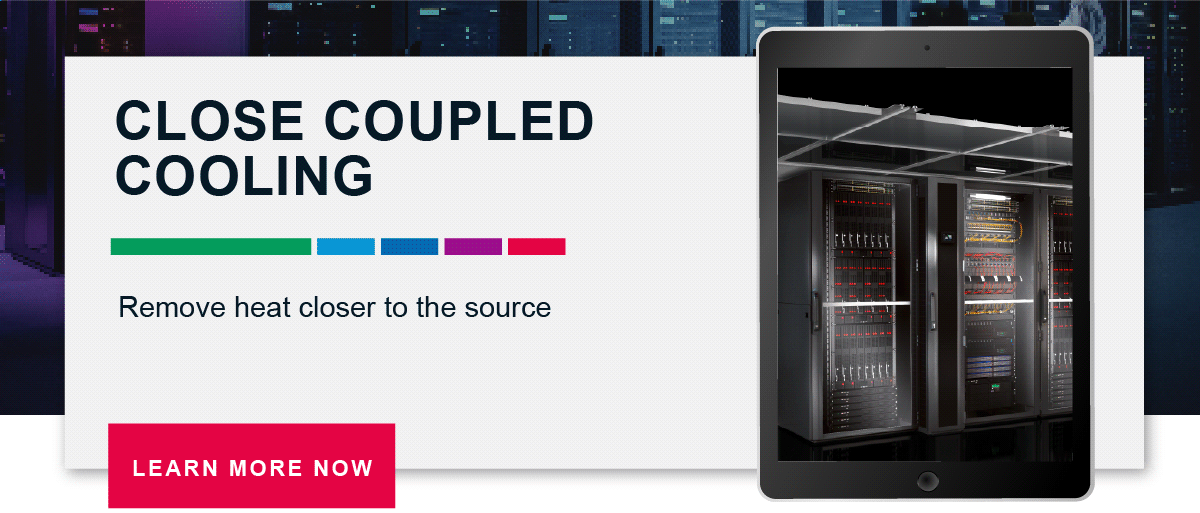Data Center Cooling: How to Deploy High-Density Solutions Without Disrupting Infrastructure
Data Center Managers, and their facility management counterparts, are eager to get more performance per watt, and the market is delivering. With blade servers, multi-core servers and other high performance computing (HPC) developments, we’re packing more power into every IT enclosure. With that surge in density, though, come challenges: how to efficiently cool all that equipment, and how to avoid considerable data center infrastructure changes.
These challenges are leading some Data Center and Facility Managers to wonder if their existing facilities are able to handle higher densities, in excess of 20kW per enclosure – or do they need to build a separate data center just for these deployments?
It is possible, with the right cooling solutions, to house HD (high-density) racks within a lower-density data center, without significant changes to the existing infrastructure. Rather than build a new facility exclusively for high-density equipment, Facility Managers can achieve efficiency by supporting it with row-based and/or rack-based cooling.
As you add equipment to your data center, a primary concern will be how to remove the heat this equipment generates, and how to do it in a way that doesn’t create hot spots. There are two ways to accomplish this: isolating HD areas within the data center, or by adding one or two pieces of HD equipment to lower-density racks. Let’s look at the pros and cons of each.
Creating a Dedicated HD Space
This option for bringing HD equipment into the data center creates a distinct and separate “pool of devices” (pod) within the facility supported by dedicated cooling systems, power and UPS.
- Pro: Consolidating HD/HPC equipment eliminates the need to adjust cooling for the different needs of HD compared to lower-density equipment.
- Con: This method is only appropriate when you have a high volume of HD equipment.
- Con: Even if there is available space, there are costs associated with building and supporting a pod structure.
Exceeding heat removal capacities in traditional Cold Aisle/Hot Aisle layouts and unrestricted air flow, HD deployments can benefit from aisle containment.
- The legacy installation uses rows of racks to create hot and cold aisles to manage the IT appliance air flows. This traditional configuration can support densities up to 10-12kW per rack. It may be possible to support higher densities with optimal airflow management.
- Aisle containment methods completely separate cold and hot air flow paths. Both solutions - Cold Aisle Containment (CAC) and Hot Aisle Containment (HAC) - have their individual advantages, and certainly have been discussed in depth over time.
Distributed HD/HPC
Rather than isolating your HD/HPC appliances, they could be distributed uniformly among enclosures supporting lower-density components. Spreading out the HD loads within the data center (not concentrated in any single zone) eliminates any disruption to your existing infrastructure and minimizes the risk of exhaust heat overwhelming existing cooling infrastructure.
- Pro: No hot spots; cooling needs are averaged/consistent throughout the data center.
- Pro: Power usage is more evenly distributed throughout the facility, with fewer high-demand spots.
- Con: For HD equipment to be placed in enclosures with lower-density systems, some racks may need to remain less populated to account for the additional power demands and added thermal loads, potentially reducing efficiency of individual enclosures.
Conclusion
As HD systems become more commonplace, every data center will be challenged to support them with cooling methods that ensure maximum heat removal and optimum uptime. For even higher loads, row-based cooling systems can provide added capacities to support HD equipment in lower density environments. The best way to accomplish this, without disrupting your current infrastructure, will employ aisle containment with in-row cooling. The right enclosures in this type of system allow for quick scaling and the flexibility to ensure that your implementation is future-proof.
To identify the right steps for bringing more HD equipment into your data center, it’ll be important to review factors that help determine the best enclosures and best cooling (such as average and peak power densities, UPS needs, room dimensions, type of floor, existing power sources, cabling needs and others). As the global leader in enclosures, the Rittal experts will be happy to work with you to identify the best solutions for the challenges you face today, and those you need to be prepared for in the future. Discover the innovative high-performance cooling solution Rittal Cooled-by-ZutaCore: A direct-on-chip evaporative technology, specially designed for demanding cooling requirements by visiting our website here. Read more about how our liquid cooling systems can help you do that by downloading “Liquid Cooling Package (LCP) Cooling Systems” now!




